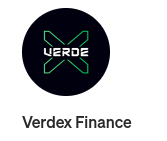
After the beginning of the DEX craze, where Uniswap rolled out seamless swaps across the decentralized landscape, there has been a mad dash to innovate in the wide open DeFi industry. In a way, the outcome has been a flurry of products flooding the marketplace and claiming to be the next best thing, while in reality only being re-branded replicas with slight upgrades. On the development side however, this was to be somewhat expected as the open source nature of DEX code, allows developers to build off of what has already been successful.
For users, the novel financial experiences offered by DEX platforms have also come with a brand new set of hopes and expectations, based on the functionality afforded by peer-to-peer networks and relief from the absence of middlemen. However in the initial stages, market sentiment perhaps persuaded too many DEXs to emphasize an absurd percentage of yield farming rewards, which significantly compromised the integrity of their tokenomics. At the moment though, even the most generous of platforms have seen their astounding percentages suddenly dwindled to more believable numbers.
Another issue that has arisen over the past year, has been the exceptionally high gas fees on Ethereum, which have put up a sizeable barrier for onboarding new users into the DeFi realm. Fortunately though, 2021 saw an explosion of alternative chains pop up, which alleviated some of these flaws in the form of low transaction fees and high throughput. Yet despite these positive progressions, tools on these different blockchains were still in their infancy and even lacked the lure and capital to compete with the incumbent DEXs.
As the ecosystems of these different blockchains matured with their own proficient products, and respectable TVLs, an additional problem came to the forefront. With so many DEXs on a variety of blockchains, each harboring their own specific liquidity pools, there came to be a staggering amount amount of fragmentation. As a solutions to this, DEXs building in or adding on multi-chain compatibility, while implementing liquidity aggregation mechanisms.
With these perspectives in mind, regarding the relatively brief but sizeable impact of DEXs, we can now focus in on the value that VerDEX brings to the Algorand ecosystem and DeFi as a whole. Objectively speaking, although the Algorand blockchain boasts impressive technical capabilities that include ZK-rollups for cross-chain solutions, and a post-quantum cryptography for atomic swaps, there has still been a lack of integration within the broader DeFi space. As a result, there currently is a overarching sense of isolation within the community and fragmentation among the blockchain.
VerDEX is in the position to change all this however, as its formidable back-end and quintessential DEX features make it an obvious choice for Algorand aficionados, while also presenting a promising unique value proposition for users on other DeFi blockchains. To improve overall capital efficiency among all DEX stakeholders, VerDEX AMM has implemented the most up to date version of programmable pricing curves.
On the same note, VerDEX Swap has been built with a dynamic trade routing model, which serves to aggregate liquidity across multiple DEXs and ultimately get users the best rates. Vaults on VerDEX meanwhile, will provide an enticing yield optimization option for ASA assets into various liquidity mining opportunities. As we get closer and closer to the official VerDEX launch, we will make sure to update you on all that is transpiring.